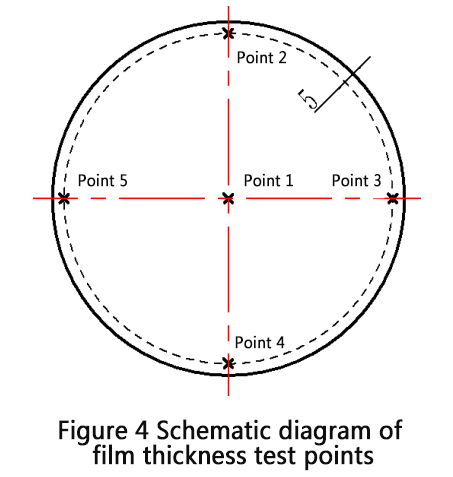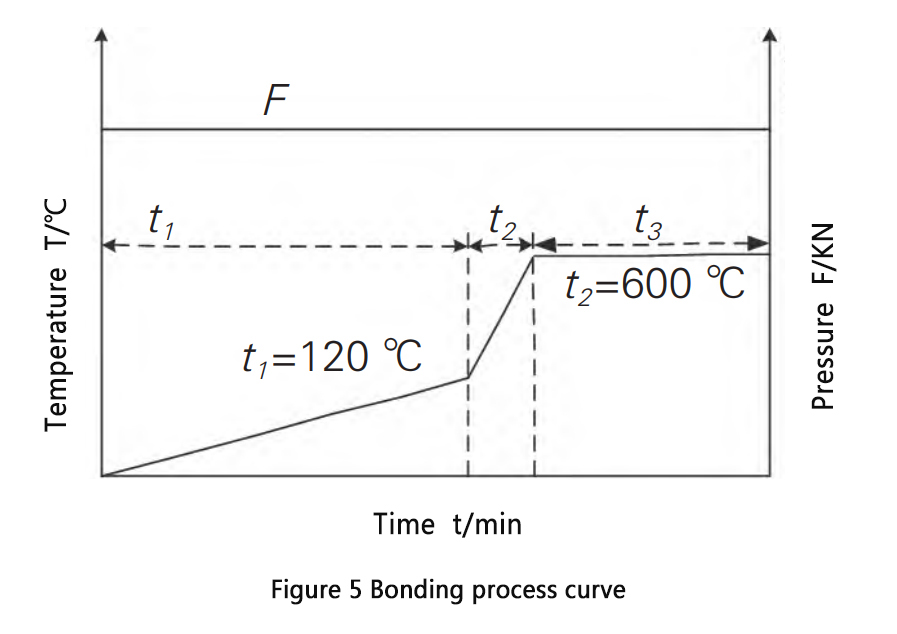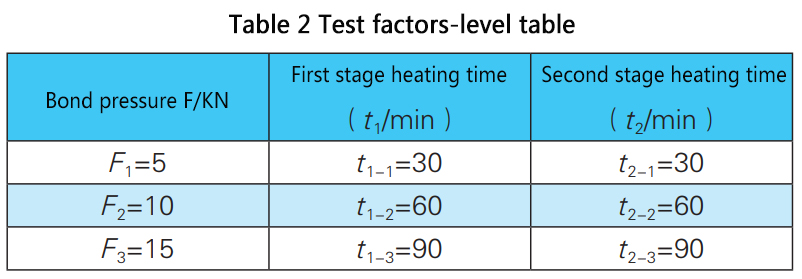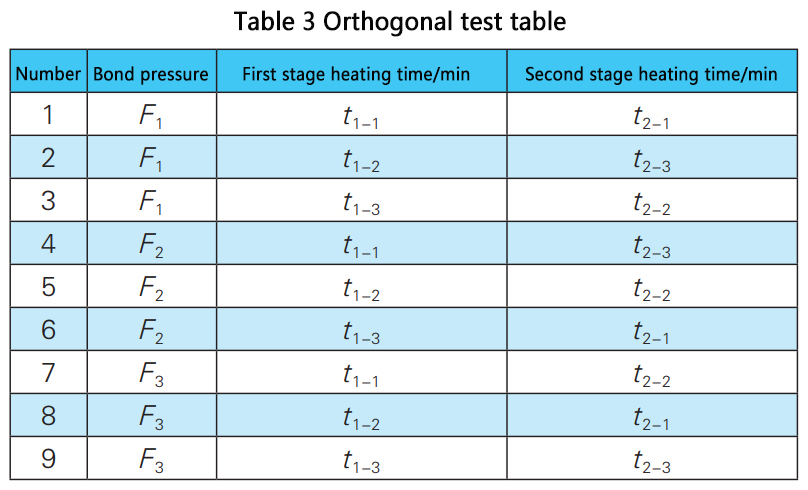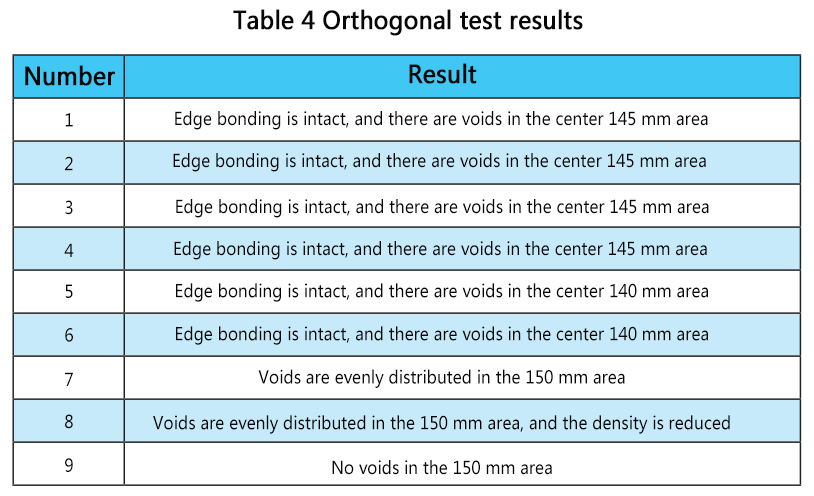2. Experimental Process
2.1 Curing of Adhesive Film
It was observed that directly creating a carbon film or bonding with graphite paper on SiC wafers coated with adhesive led to several issues:
1. Under vacuum conditions, the adhesive film on SiC wafers developed a scalelike appearance due to significant air release, resulting in surface porosity. This prevented the adhesive layers from properly bonding after carbonization.
2. During bonding, the wafer must be placed onto the graphite paper in one go. If repositioning occurs, uneven pressure can reduce adhesive uniformity, negatively impacting bonding quality.
3. In vacuum operations, the release of air from the adhesive layer caused peeling and the formation of numerous voids within the adhesive film, resulting in bonding defects. To address these issues, pre-drying the adhesive on the wafer’s bonding surface using a hot plate after spin-coating is recommended.
2.2 Carbonization Process
The process of creating a carbon film on the SiC seed wafer and bonding it to graphite paper requires carbonization of the adhesive layer at a specific temperature to ensure tight bonding. Incomplete carbonization of the adhesive layer can lead to its decomposition during growth, releasing impurities that affect crystal growth quality. Therefore, ensuring complete carbonization of the adhesive layer is crucial for high-density bonding. This study examines the effect of temperature on adhesive carbonization. A uniform layer of photoresist was applied to the wafer surface and placed in a tube furnace under vacuum (<10 Pa). The temperature was raised to preset levels (400℃, 500℃, and 600℃) and maintained for 3-5 hours to achieve carbonization.
Experiments indicated:
At 400℃, after 3 hours, the adhesive film did not carbonize and appeared dark red; no significant change was observed after 4 hours.
At 500℃, after 3 hours, the film turned black but still transmitted light; no significant change after 4 hours.
At 600℃, after 3 hours, the film turned black with no light transmission, indicating complete carbonization.
Thus, the suitable bonding temperature needs to be ≥600℃.
2.3 Adhesive Application Process
The uniformity of the adhesive film is a critical indicator for evaluating the adhesive application process and ensuring a uniform bonding layer. This section explores the optimal spin speed and coating time for different adhesive film thicknesses. The uniformity
u of the film thickness is defined as the ratio of the minimum film thickness Lmin to the maximum film thickness Lmax over the useful area. Five points on the wafer were selected to measure the film thickness, and the uniformity was calculated. Figure 4 illustrates the measurement points.
For high-density bonding between the SiC wafer and graphite components, the preferred adhesive film thickness is 1-5 µm. A film thickness of 2 µm was chosen, applicable to both carbon film preparation and wafer/graphite paper bonding processes. The optimal spin-coating parameters for the carbonizing adhesive are 15 s at 2500 r/min, and for the bonding adhesive, 15 s at 2000 r/min.
2.4 Bonding Process
During the bonding of the SiC wafer to graphite/graphite paper, it is crucial to completely eliminate air and organic gases generated during carbonization from the bonding layer. Incomplete gas elimination results in voids, leading to a non-dense bonding layer. The air and organic gases can be evacuated using a mechanical oil pump. Initially, continuous operation of the mechanical pump ensures the vacuum chamber reaches its limit, allowing complete air removal from the bonding layer. Rapid temperature rise can prevent timely gas elimination during high-temperature carbonization, forming voids in the bonding layer. Adhesive properties indicate significant outgassing at ≤120℃, stabilizing above this temperature.
External pressure is applied during bonding to enhance the density of the adhesive film, facilitating the expulsion of air and organic gases, resulting in a high-density bonding layer.
In summary, the bonding process curve shown in Figure 5 was developed. Under specific pressure, the temperature is raised to the outgassing temperature (~120℃) and held until outgassing is complete. Then, the temperature is increased to the carbonization temperature, maintained for the required duration, followed by natural cooling to room temperature, pressure release, and removal of the bonded wafer.
According to section 2.2, the adhesive film needs to be carbonized at 600℃ for over 3 hours. Therefore, in the bonding process curve, T2 is set to 600℃ and t2 to 3 hours. The optimal values for the bonding process curve, determined through orthogonal experiments studying the effects of bonding pressure, first-stage heating time t1, and second-stage heating time t2 on bonding outcomes, are shown in Tables 2-4.
Results indicated:
At a bonding pressure of 5 kN, heating time had minimal impact on bonding.
At 10 kN, the void area in the bonding layer decreased with longer first-stage heating.
At 15 kN, extending the first-stage heating significantly reduced voids, eventually eliminating them.
The second-stage heating time’s effect on bonding was not evident in the orthogonal tests. Fixing the bonding pressure at 15 kN and the first-stage heating time at 90 min, the second-stage heating times of 30, 60, and 90 min all resulted in void-free dense bonding layers, indicating the second-stage heating time had little impact on bonding.
Optimal values for the bonding process curve are: bonding pressure 15 kN, first-stage heating time 90 min, first-stage temperature 120℃, second-stage heating time 30 min, second-stage temperature 600℃, and second-stage holding time 3 hours.
Post time: Jun-11-2024

